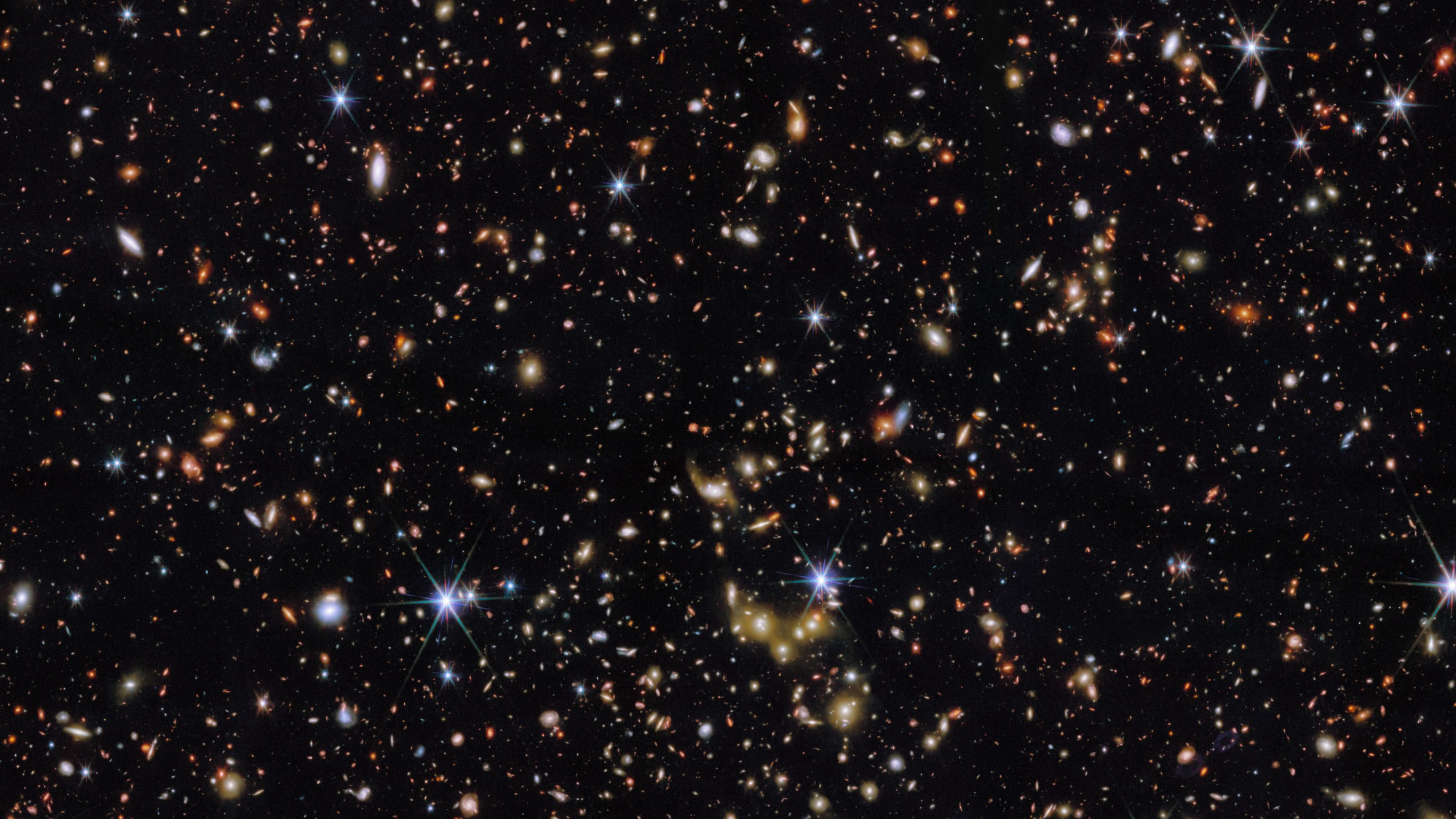Mars Rover Curiosity's Photos: September to November 2012
Small Debris on the Ground Beside Curiosity
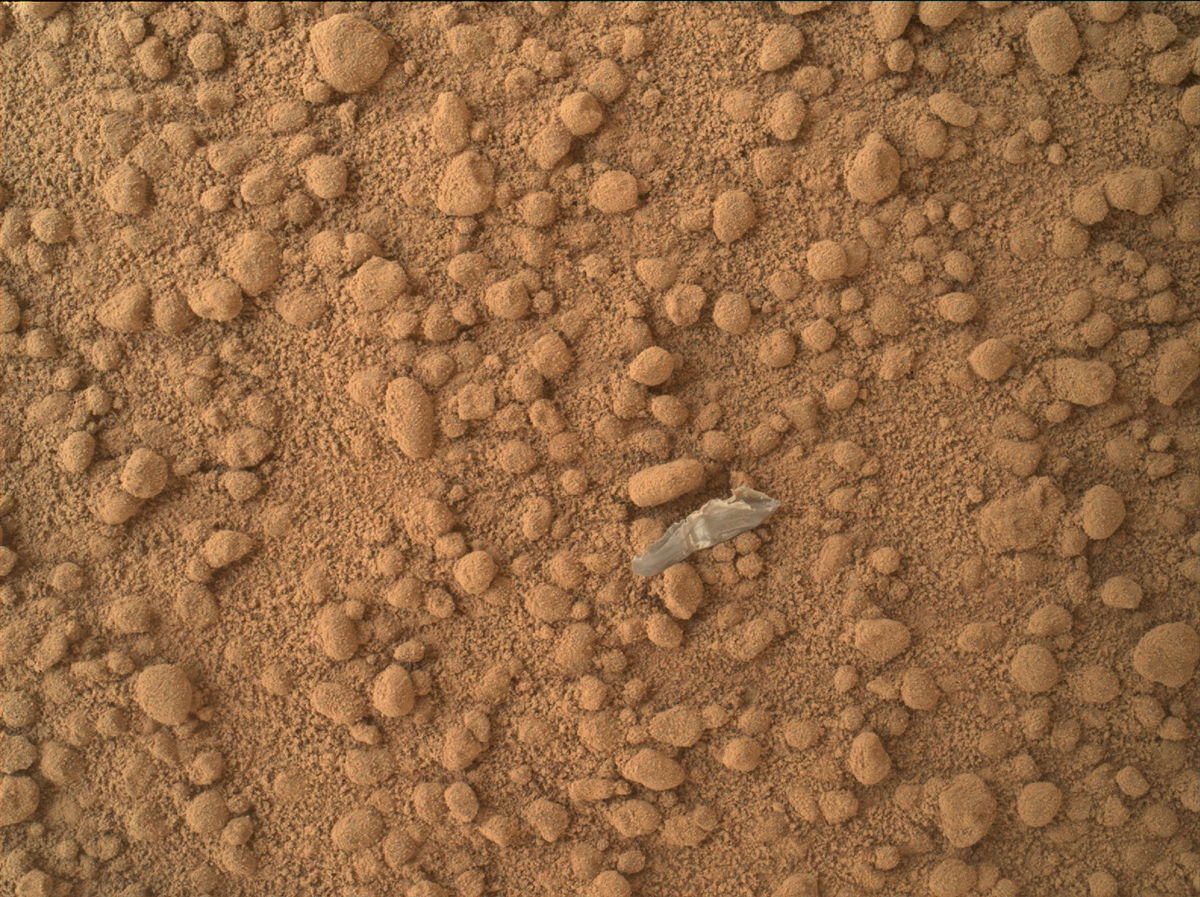
This image from the Mars Hand Lens Imager (MAHLI) camera on NASA's Mars rover Curiosity shows a small bright object on the ground beside the rover at the "Rocknest" site. The object is just below the center of this image. It is about half an inch (1.3 centimeters) long. The rover team has assessed this object as debris from the spacecraft, possibly from the events of landing on Mars. The image was taken during the mission's 65th Martian day, or sol (Oct. 11, 2012).
Mars Rover Curiosity's Pet Rock 'Jake'
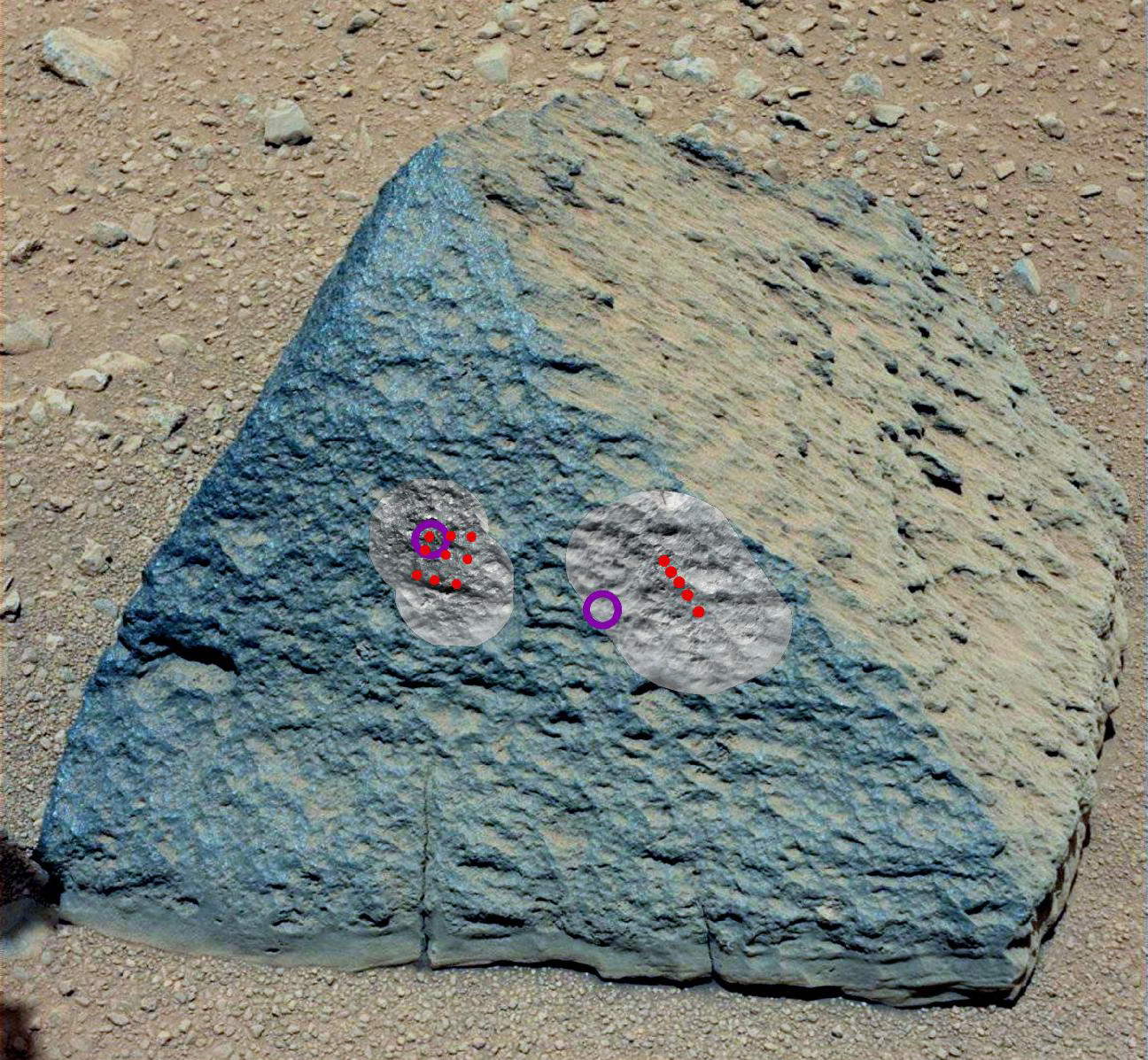
This image shows where NASA's Curiosity rover aimed two different instruments to study a rock known as "Jake Matijevic" in late September 2012. The red dots indicate where Curiosity fired its laser at the rock. The circular black and white images are ChemCam images to examine the laser burns. Purple circles show spots where Curiosity used its Alpha Particle X-ray Spectrometer to study the rock.
Mars Scuffmark Up Close by Curiosity Rover
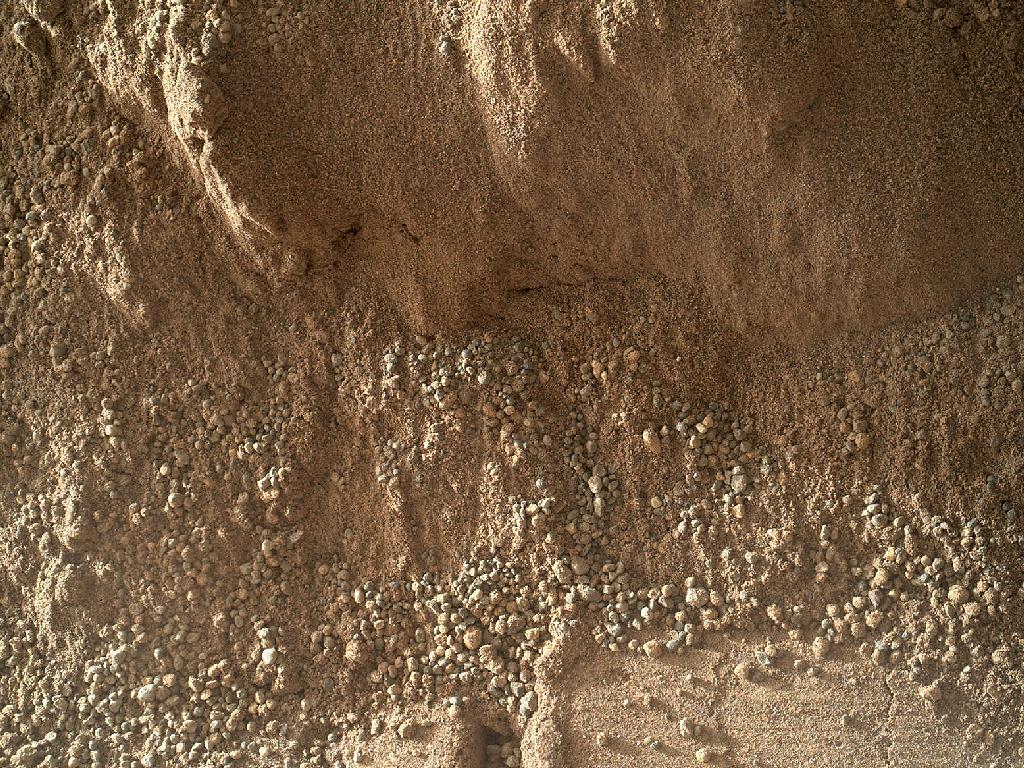
This photo by NASA's Mars rover Curiosity shows the wall of a scuffmark the rover made in a windblown ripple of Martian sand with its wheel, which made the prominent trough at bottom. The largest grains here are between 1 and 2 millimeters in size. Image taken on Oct. 4, 2012.
Remnants of Ancient Streambed on Mars
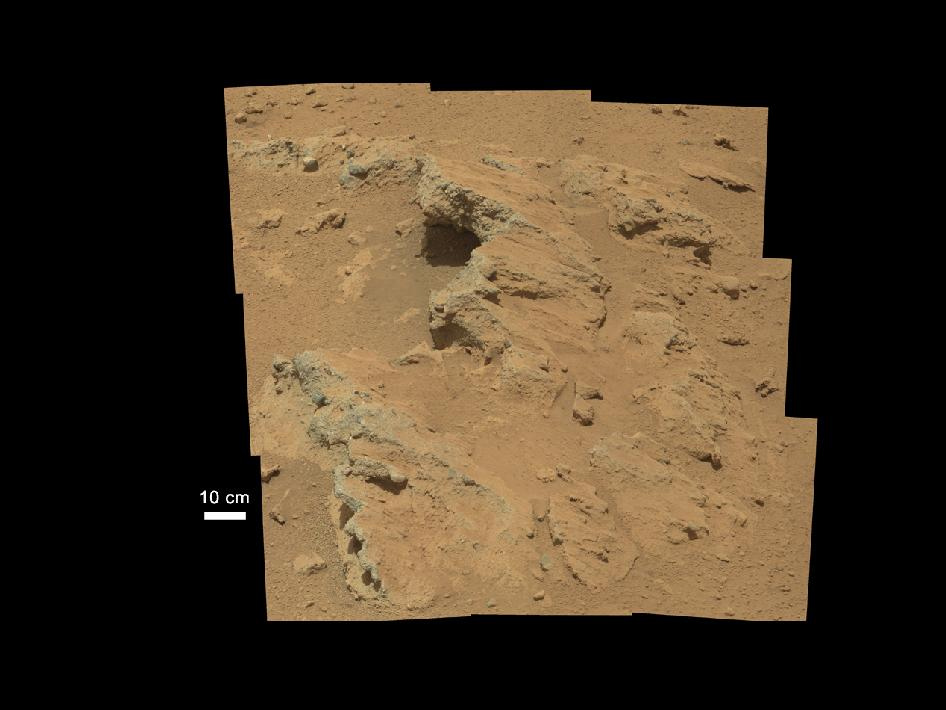
NASA's Curiosity rover found evidence for an ancient, flowing stream on Mars at a few sites, including the rock outcrop pictured here, which the science team has named "Hottah" after Hottah Lake in Canada’s Northwest Territories. This image mosaic was taken by Curiosity's 100-millimeter Mastcam telephoto lens on its 39th Martian day, or sol, of the mission (Sept. 14, 2012 PDT/Sept. 15 GMT). [Full Story]
Curiosity's Roadside Discoveries
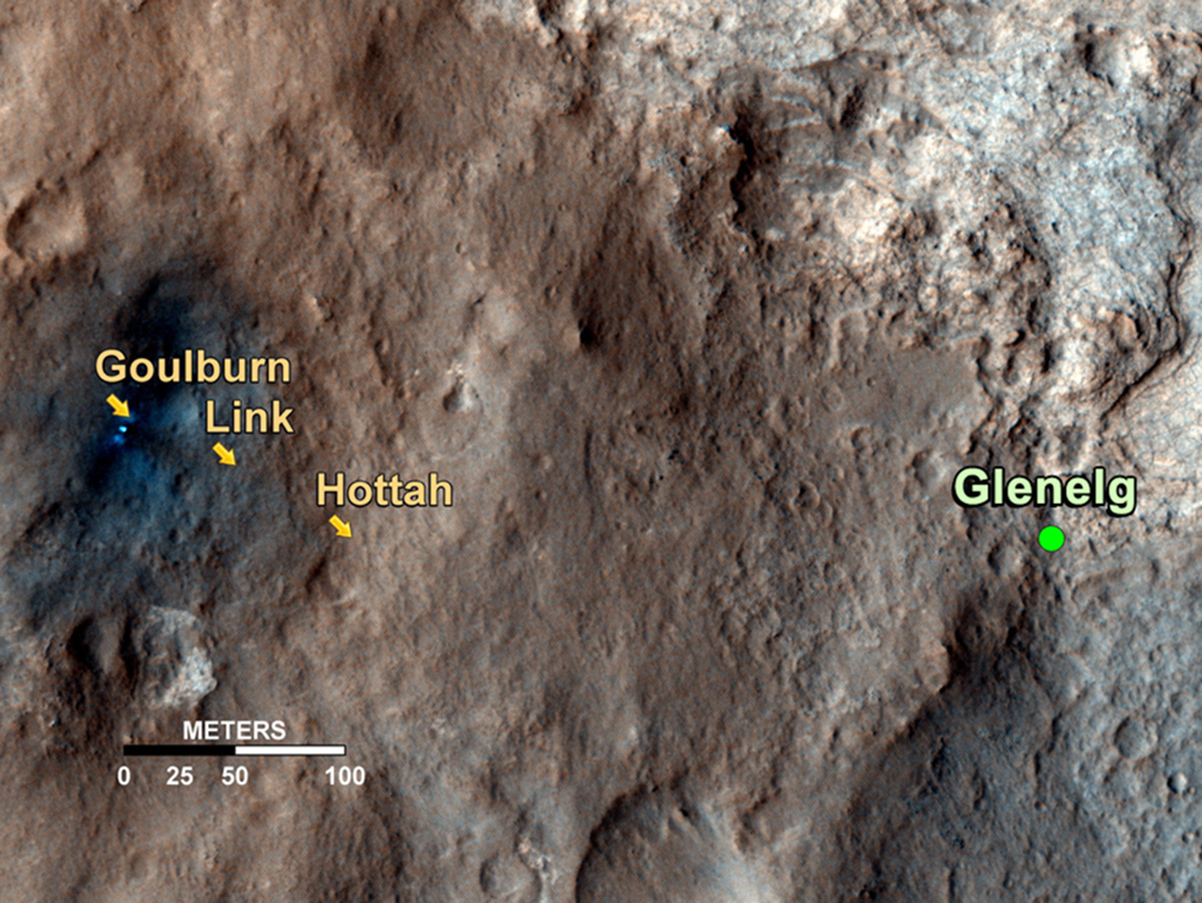
This map shows the path on Mars of NASA's Curiosity rover toward Glenelg, an area where three terrains of scientific interest converge. Arrows mark geological features encountered so far that led to the discovery of what appears to be an ancient Martian streambed. Image released September 27, 2012. [Full Story]
'Rocknest' From Sol 52 Location
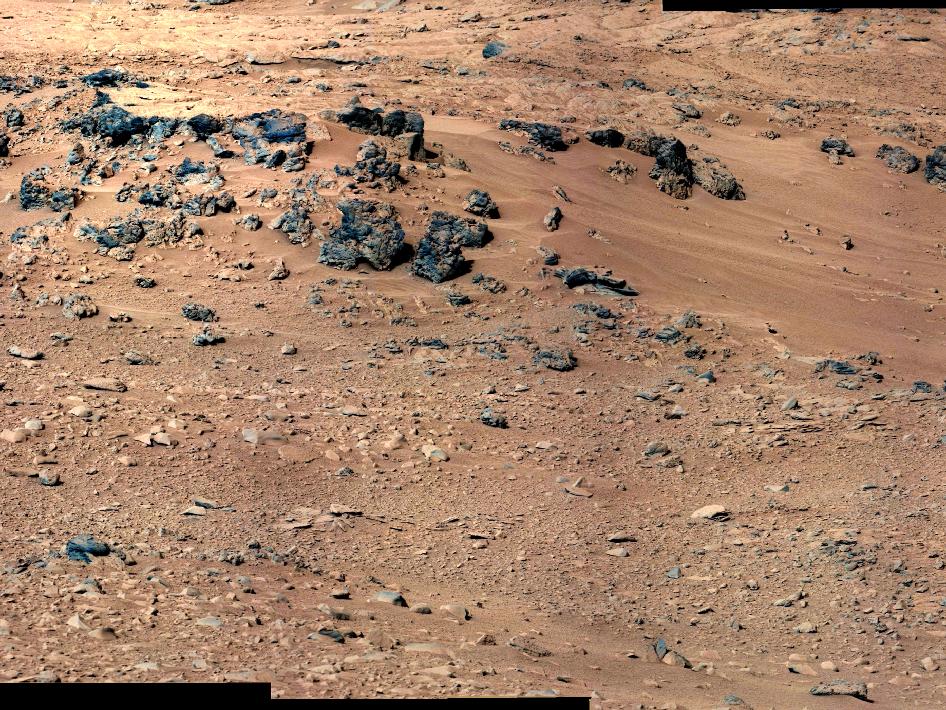
This patch of windblown sand and dust downhill from a cluster of dark rocks is the "Rocknest" site, which has been selected as the likely location for first use of the scoop on the arm of NASA's Mars rover Curiosity. This view is a mosaic of images taken by the telephoto right-eye camera of the Mast Camera (Mastcam) during the 52nd Martian day, or sol, of the mission (Sept. 28, 2012), four sols before the rover arrived at Rocknest.
Curiosity's Landing Area — Where Water Flowed Downslope
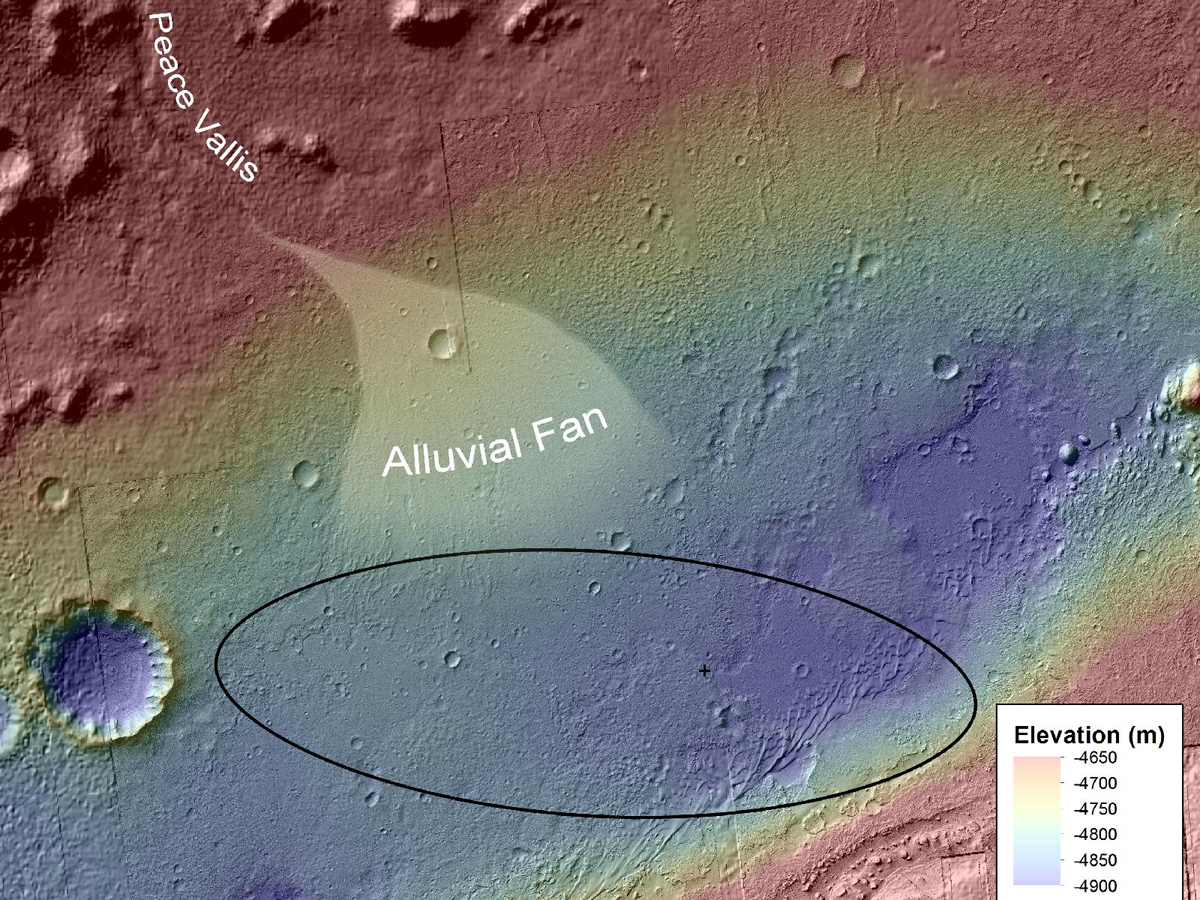
This image shows the topography, with shading added, around the area where NASA's Curiosity rover landed on Aug. 5 PDT (Aug. 6 EDT). Higher elevations are colored in red, with cooler colors indicating transitions downslope to lower elevations. An alluvial fan, or fan-shaped deposit where debris spreads out downslope, has been highlighted in lighter colors for better viewing. Image released September 27, 2012.
Get the Space.com Newsletter
Breaking space news, the latest updates on rocket launches, skywatching events and more!
Downslope of the Fan
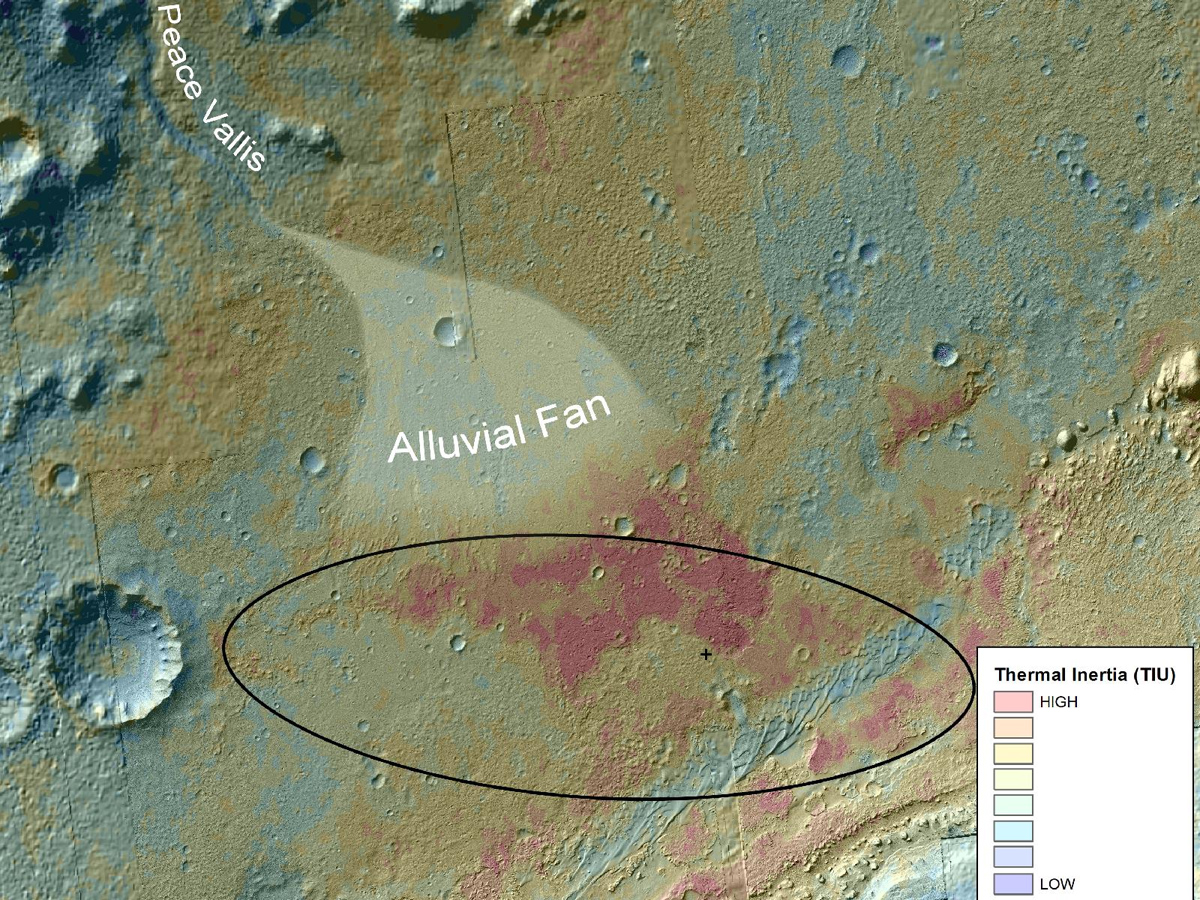
This false-color map shows the area within Gale Crater on Mars, where NASA's Curiosity rover landed on Aug. 5, 2012 PDT (Aug. 6, 2012 EDT). It merges topographic data with thermal inertia data that record the ability of the surface to hold onto heat. Red indicates a surface material that retains its heat longer into the evening, suggesting differences relative to its surroundings. Image released September 27, 2012.
Curiosity's View on the Way to 'Glenelg'

This 360-degree panorama from NASA's Mars rover Curiosity shows the rocky terrain surrounding it as of its 55th Martian day, or sol, of the mission (Oct. 1, 2012). The base of Mount Sharp can be seen at upper left.
Join our Space Forums to keep talking space on the latest missions, night sky and more! And if you have a news tip, correction or comment, let us know at: community@space.com.

Space.com is the premier source of space exploration, innovation and astronomy news, chronicling (and celebrating) humanity's ongoing expansion across the final frontier. Originally founded in 1999, Space.com is, and always has been, the passion of writers and editors who are space fans and also trained journalists. Our current news team consists of Editor-in-Chief Tariq Malik; Editor Hanneke Weitering, Senior Space Writer Mike Wall; Senior Writer Meghan Bartels; Senior Writer Chelsea Gohd, Senior Writer Tereza Pultarova and Staff Writer Alexander Cox, focusing on e-commerce. Senior Producer Steve Spaleta oversees our space videos, with Diana Whitcroft as our Social Media Editor.
